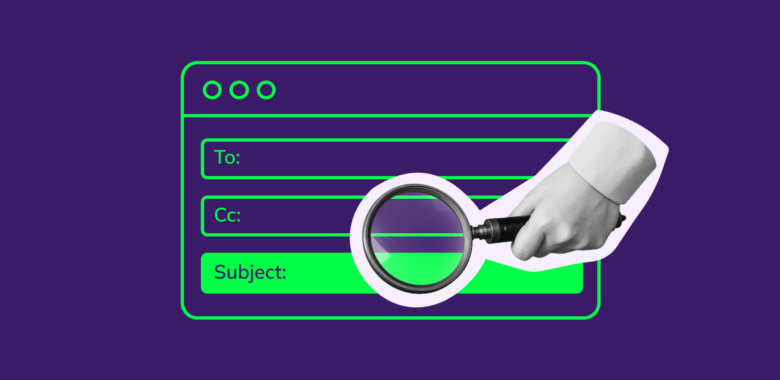Top tips on writing great subject lines
So how do you write subject lines that people can’t resist clicking on? It’s all about standing out from the crowd, after all.
Shorten them
While there’s some debate among email marketers on the length of a perfect subject line, they all agree that brevity is key. Generally, the recommended length is around 40-60 characters, and for mobile, it’s even less — around 30 characters.
So try to keep your subject lines snappy and short (ideally under 40 characters) to grab the attention of your readers straight away.
Compel, compel, compel
Prompt action by incorporating compelling calls to action (CTAs). Begin your subject lines with action-oriented verbs, such as “Get,” “Shop,” or “Download” to grab your reader’s attention and boost those open rates.
You don’t want to overdo it, though, so steer clear of spammy tactics like writing in all caps or adding too many exclamation marks.
Spark curiosity
Humans are naturally curious. Asking interesting questions in your subject line will pique your reader’s attention. And remember, a little humor, clever wordplay, or fresh language can go a long way in making our emails stand out!
Induce a sense of urgency
Subject lines such as “Last chance” and “Ending tonight” are everywhere – and there’s a good reason for that. As basic as these subject lines are, they work by playing on the recipient’s fear of missing out, otherwise known as FOMO.
As soon as there’s a hint of the time or the offer is limited, the recipient is pushed to open the email to avoid missing out. This sense of urgency is a great driver for conversions.
Deliver on your promises
Stay relevant and maintain integrity, this is important for building trust with your audience. Your subject lines must deliver on their promises, to make sure that your email content matches the audience’s expectations. Keep it genuine and consistent to earn your readers’ trust. Avoid over-promising!










